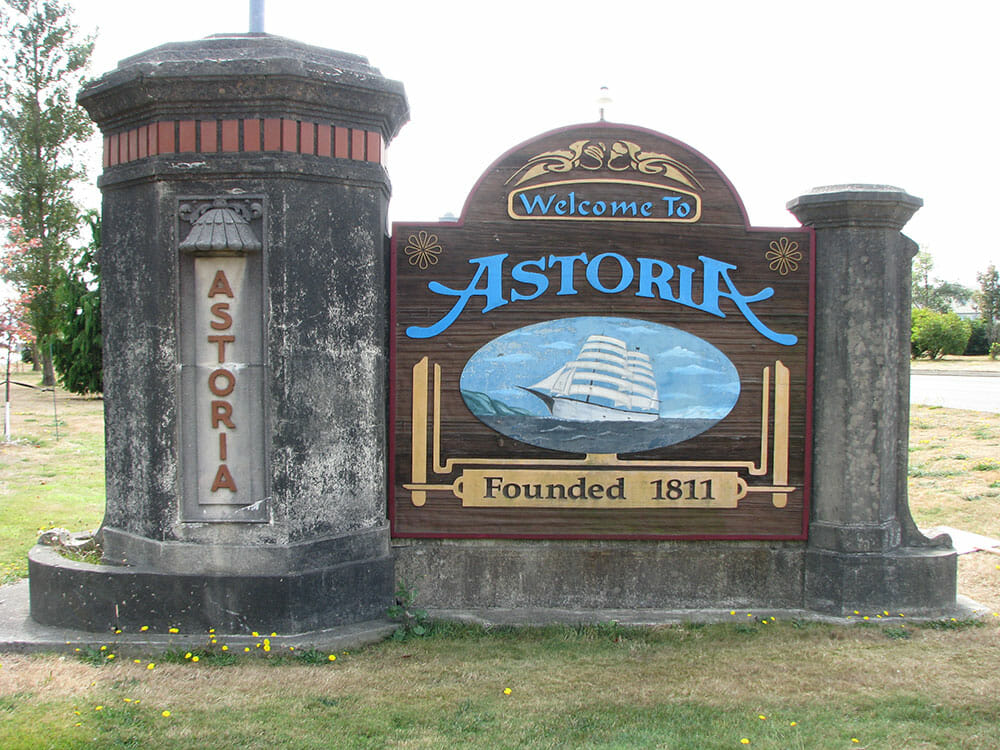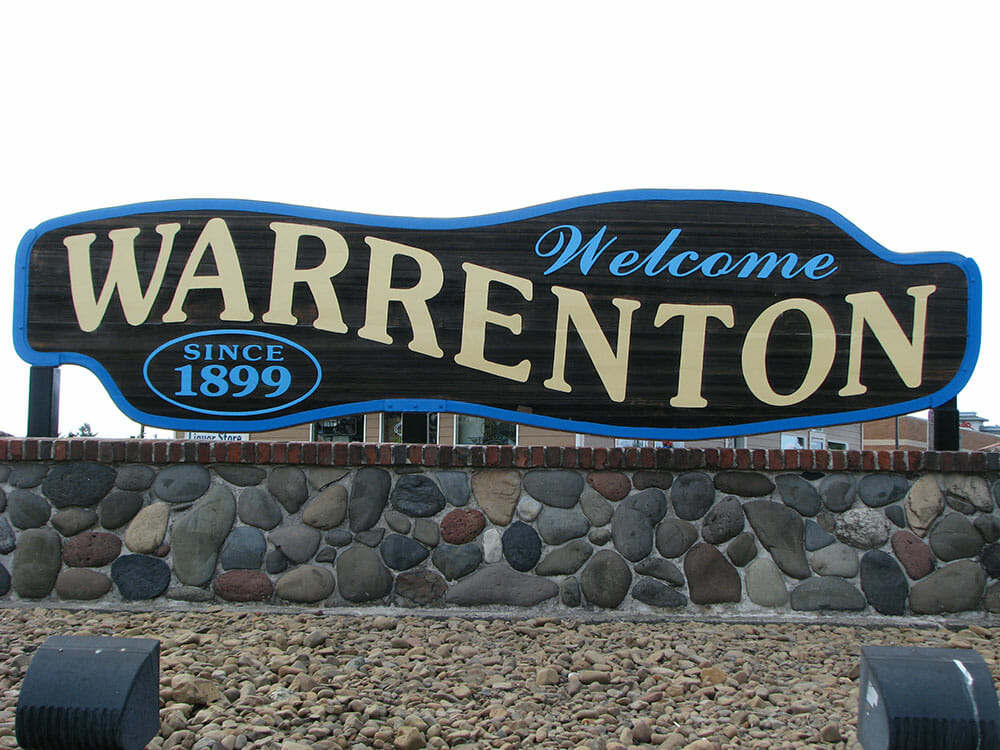Our Community
The cities of Astoria and Warrenton are located on Oregon’s North Coast, where the Columbia River meets the Pacific Ocean, 90 miles northwest of Portland. Once the salmon canning capital of the world, Astoria boasts a vibrant cultural scene that includes art galleries, museums, trendy boutiques and Victorian homes. These notable maritime towns are also rich with history and exquisite scenery, and a burgeoning foodie scene offers discoveries from fine dining and local brews to the still thriving commercial fishing industry.

Astoria is a city of about 10,000 people on the Columbia River, located in Clatsop County. Because of its steep hills and beautiful Victorian homes, Astoria has been called the “Little San Francisco of the Pacific Northwest.”

Just across Youngs Bay is Warrenton, a city of more than 5,000, that encompasses Fort Stevens State Park and its broad, clean ocean beaches. There are two marinas that serve pleasure boats and a large charter and commercial fishing fleet.
Astoria and Warrenton have a marine climate, which means the summers are cool, with highs around 70, and the winters are mild, with few nights of freezing temperatures. The area gets about 75 inches of rain per year, which accounts for its vivid greenness and crystal clear air. Winter storms can be dramatic, with winds reaching 70 to 100 miles per hour.
Historical Overview
In May, 1792, American Captain Robert Gray sailed his 230-ton Columbia Rediviva between Point Adams in what is now Oregon and Cape Disappointment in what is now Washington to first enter the Columbia River. Ten years later, President Thomas Jefferson asked his personal secretary, Army Captain Meriwether Lewis, to lead an expedition to the Pacific to find “...whether the Columbia, Oregen, Colorado, or any other river may offer the most direct and practicable water communication across this continent for the purposes of commerce”.
The Lewis and Clark Expedition left Pittsburgh August 31, 1803. The Corps of Discovery entered the Lower Columbia River in November of 1805 and stayed through March 1806. They “wintered over” at Fort Clatsop, where it rained all but 12 days, hunting, making moccasins and other clothing, trading with the Clatsop, Tillamook, and Chinook Indians, and working on their journals.
In 1811, five years after the departure of Lewis & Clark, John Jacob Astor, a New York financier, sent fur traders aboard the ship Tonquin to establish a trading post. They built Fort Astoria on a site now preserved as a monument in the downtown area.
An estimated 2,000 shipwrecks have occurred near the mouth of the Columbia River – known for a century as “The Graveyard of the Pacific.” One, the Peter Iredale of 1906, is still visible on the beach at Fort Stevens State Park. Native Americans lived in the area for an estimated 10,000 years before Captain Gray’s arrival.
Quick Facts
- Learn more about the history of this area by visiting our area museums:
- In the early 19th century, this land was inhabited by the Clatsop tribe of Native Americans - a small tribe of Chinookan-speaking who inhabited northwestern coast of present-day Oregon from the Columbia River south to Tillamook head. The Clatsop-Nehalem Confederated Tribes of Oregon continue to have a presence in the region today
- Many place names in the area come from the Chinook Jargon, which was used throughout the Pacific Northwest trade routes.
- Clatsop = place of dried salmon
- Ecola = whale
- Skookum = strong, genuine, reliable
- Tillicum = family, people
- Tyee = leader, chief
- In 1792, American captain Robert Gray crossed the Columbia Bar, becoming the first known explorer of European descent to enter the river - which was named after his ship the Columbia Rediviva.
- The Columbia is the largest river in the Pacific Northwest, rising in the Rocky Mountains of British Columbia, it is 1,243 miles long
- Lewis and Clark stayed near present day Astoria during the winter of 1805-06, and built Fort Clatsop for shelter. (the current Fort is a replica)
- Members of the Pacific Fur Company, owned by John Jacob Astor, arrived in March of 1811 and established Fort Astoria.
- Astoria is the oldest continuous U.S. settlement west of the Rocky Mountains.
- In 1847, the first post office west of the Rockies was established in Astoria by James Shively and a monument is located on 15th near Exchange Street.
- The first U.S. Customs house was established in 1849 and a historic replica is located at 3455 Leif Erickson Drive, Astoria.
- In 1854, Astoria became the Clatsop County seat.
- Built in 1863, Fort Stevens Military Reservation guarded the mouth of the Columbia River during the Civil War and World Wars I and II.
- The Astoria-Warrenton Area Chamber of Commerce was established in 1873 as the Greater Astoria Chamber of Commerce.
- Captain George Flavel was one of the first licensed Columbia River Bar Pilots. He built the Flavel Mansion in 1886, now open to the public as the Flavel House Museum.
- Immigrants came from Scandinavia and China expanding the area’s culture, as well as its economy.
- From 1898 to 1938, the Columbia River Quarantine Station, which had been known as the Columbia River’s “Ellis Island,” was operated by the U.S. Public Health Service to quarantine immigrants who came to the region by ship. The Knappton Cove Heritage Center is located on the north side of the Columbia River about 3 miles beyond the Astoria-Megler Bridge.
- The City of Warrenton was platted in 1889 and incorporated as a city under the laws of Oregon in 1899. It was named after Daniel Knight Warren.
- Warrenton is made up of the previously individual communities of Flavel, Fort Stevens, Hammond, Lexington and Skipanon. Hammond merged into Warrenton in 1991.
- In the late 1800’s, Astoria’s salmon canneries, forest and shipping industries turned the area into the liveliest boom town between Seattle and San Francisco. At Pier 39-Astoria you can visit the Hanthorn Cannery Museum.
- The English sailing vessel the Peter Iredale ran aground on the beach at Fort Stevens during a storm in 1906 and its remains are still visible there.
- In 1913, Clara Cynthia Munson was elected Mayor of Warrenton - the first woman mayor in Oregon.
- Downtown Astoria businesses were first built on pilings over the Columbia River’s edge. Nearly all of the downtown area burned to the “ground” in 1922. Fill was added before downtown was rebuilt. Any flat land you see in Astoria is most likely fill. The Astoria Underground Tour has a great perspective on the structure below this downtown area.
- The Astoria Column was dedicated in 1926. It is a 125 foot high memorial depicting the history of the area in a mural located on the highest point in Astoria.
- The Astoria-Megler Bridge, which was formally dedicated August 27, 1966, is 4.1 miles long and is the longest continuous truss bridge in North America and was the final segment of U.S. Route 101 to be completed between Olympia, Washington, and Los Angeles, California
- Movies made in the Astoria area include The Goonies, Benji the Hunted, Short Circuit, Come See the Paradise, Kindergarten Cop, Teenage Mutant Ninja Turtles III and Free Willy.
- Largest employment industry sectors in the area include:
- Government including the U.S. Coast Guard
- Education
- Healthcare
- Timber
- Fishing
- Food manufacturing including breweries
- Hospitality
- The population of Astoria is approximately 10,000.
- The population of Warrenton is approximately 5,050.
- The area's climate is considered mild marine.
- Average precipitation is 67 inches per year, with about 10 inches falling each month in November, December and January.
- Average high temperature is 59F, with August being the warmest month and few days reach 80F or hotter.
- Average low temperature is 44F, with December being the coolest month and about 25 days annually when the nighttime low temperature falls below freezing and snowfall is rare.
- Astoria & Warrenton each is governed by an elected five member council. The mayor serves as the political head of the government while the city manager is the chief administrator.
